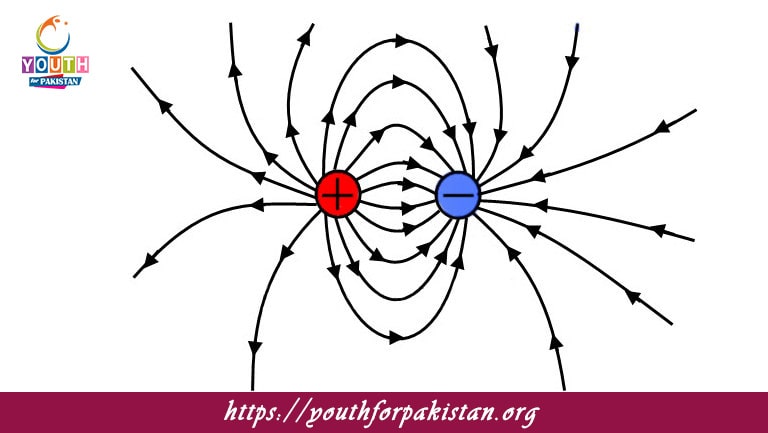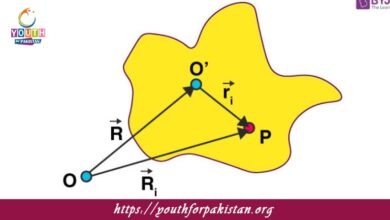Electrostatics MDCAT MCQs with Answers

Welcome to the Electrostatics MDCAT MCQs with Answers. In this post, we have shared Electrostatics Multiple Choice Questions and Answers for PMC MDCAT 2024. Each question in MDCAT Physics offers a chance to enhance your knowledge regarding Electrostatics MCQs in this MDCAT Online Test.
Electrostatics MDCAT MCQs Test Preparations
The SI unit of electric charge is:
a) Volt
b) Ampere
c) Coulomb
d) Ohm
Electric field intensity (E) is defined as:
a) The force experienced by a unit charge
b) The energy per unit charge
c) The work done per unit charge
d) The charge per unit volume
The electric potential (V) at a point is:
a) The force per unit charge
b) The work done in bringing a unit positive charge from infinity to that point
c) The electric field strength
d) The rate of change of electric field
The unit of electric potential is:
a) Joule
b) Coulomb
c) Newton per Coulomb
d) Volt
The electric field (E) due to a point charge decreases with:
a) The distance
b) The square of the distance
c) The cube of the distance
d) The fourth power of the distance
The electric potential due to a point charge is:
a) Inversely proportional to the distance
b) Directly proportional to the distance
c) Inversely proportional to the square of the distance
d) Directly proportional to the square of the distance
The electric flux through a surface is given by:
a) E × A
b) E × A × cosθ
c) E / A
d) A / E
Gauss’s law relates the electric flux through a closed surface to:
a) The electric potential
b) The charge enclosed by the surface
c) The electric field intensity
d) The distance from the charge
The electric field inside a conductor in electrostatic equilibrium is:
a) Zero
b) Maximum
c) Minimum
d) Equal to the potential difference
The capacitance of a capacitor depends on:
a) The charge and potential difference
b) The charge and the distance between plates
c) The area of plates and the separation between them
d) The type of charge
The unit of capacitance is:
a) Joule
b) Farad
c) Ohm
d) Tesla
The potential difference (V) across a capacitor is:
a) Directly proportional to the charge (Q)
b) Inversely proportional to the capacitance (C)
c) Directly proportional to both charge and capacitance
d) Inversely proportional to the charge
The energy stored in a capacitor is given by:
a) (1/2) CV²
b) (1/2) Q²/C
c) CV
d) QV
The dielectric constant (κ) of a medium is:
a) The ratio of electric field in vacuum to the electric field in the medium
b) The ratio of the capacitance of the capacitor with the dielectric to that without the dielectric
c) The ratio of the electric potential in the medium to that in vacuum
d) The ratio of the charge in the medium to that in vacuum
The electric potential is zero at a point if:
a) The electric field is zero
b) The net charge is zero
c) The point is equidistant from two equal and opposite charges
d) The distance from the charge is infinity
The force between two charges is directly proportional to:
a) The product of their charges
b) The distance between them
c) The square of the distance between them
d) The inverse of the product of their charges
In a uniform electric field, the electric potential difference between two points is:
a) Directly proportional to the distance between the points
b) Inversely proportional to the distance between the points
c) Independent of the distance between the points
d) Zero
The electric field due to a uniform sheet of charge is:
a) Zero
b) Constant and independent of the distance from the sheet
c) Directly proportional to the distance from the sheet
d) Inversely proportional to the distance from the sheet
The electric potential energy of a system of charges is:
a) The work done in assembling the charges from infinity
b) The product of the charges and their distance
c) The sum of the charges
d) The work done to move a charge in the electric field
In a parallel-plate capacitor, the capacitance is increased by:
a) Increasing the distance between the plates
b) Decreasing the area of the plates
c) Increasing the area of the plates
d) Decreasing the dielectric constant
The electric field between the plates of a capacitor is:
a) Uniform
b) Varies inversely with the distance between the plates
c) Directly proportional to the potential difference
d) Varies with the amount of charge
If the dielectric constant of a medium is greater than 1, it:
a) Increases the capacitance of a capacitor
b) Decreases the capacitance of a capacitor
c) Has no effect on the capacitance
d) Increases the electric field between the plates
The electric potential at a point in space is the work done to:
a) Move a positive charge from infinity to that point
b) Move a negative charge from infinity to that point
c) Bring a unit charge from infinity to that point
d) Move a charge from one point to another within the field
The electric field inside a charged spherical conductor is:
a) Uniform and zero
b) Zero
c) Varies with distance from the center
d) Constant
The electric field due to an infinite line of charge is:
a) Inversely proportional to the distance from the line
b) Directly proportional to the distance from the line
c) Constant
d) Varies with the square of the distance from the line
The work done to move a charge in an electric field is:
a) Independent of the path taken
b) Dependent on the path taken
c) Zero if the charge moves along an equipotential surface
d) Directly proportional to the electric field
The electric potential difference between two points is:
a) The work done per unit charge
b) The charge per unit work done
c) The product of the charge and the distance
d) The work done per unit distance
A conductor in electrostatic equilibrium has:
a) Electric field inside it
b) Charge distributed uniformly on its surface
c) Electric potential varying across its surface
d) No charge on its surface
The principle of superposition in electrostatics states that:
a) The total electric field is the vector sum of individual fields
b) The total electric potential is the product of individual potentials
c) Electric fields cannot be added
d) The net force is independent of the number of charges
The electric field due to a uniformly charged spherical shell is:
a) Zero inside the shell
b) Uniform inside the shell
c) Directly proportional to the distance from the center
d) Varies with the square of the distance from the center
In an electric field, the direction of the force on a positive test charge is:
a) Opposite to the direction of the electric field
b) Along the direction of the electric field
c) Perpendicular to the electric field
d) Randomly oriented
The electric field lines around a positive point charge:
a) Point inward
b) Point outward
c) Form closed loops
d) Are parallel and equally spaced
The work done to move a charge in an electric field is equal to:
a) The electric potential energy of the charge
b) The kinetic energy of the charge
c) The electric field strength
d) The potential difference between the two points
The capacitance of a capacitor in series is:
a) The sum of the individual capacitances
b) The product of the individual capacitances
c) Less than any individual capacitance
d) Equal to the reciprocal of the sum of the reciprocals of individual capacitances
The capacitance of a capacitor in parallel is:
a) The sum of the individual capacitances
b) The product of the individual capacitances
c) Equal to the reciprocal of the sum of the reciprocals of individual capacitances
d) The same as any individual capacitance
The electric field due to a point charge at a distance r is given by:
a) E = kQ/r
b) E = kQ/r²
c) E = Q/4πε₀r
d) E = Q/4πr²
The energy stored in a capacitor is:
a) U = Q²/2C
b) U = CV
c) U = 1/2 QV
d) U = QV
The electric field lines inside a conductor in electrostatic equilibrium:
a) Are random
b) Are curved
c) Are perpendicular to the surface
d) Are parallel
If the distance between two charges is doubled, the force between them:
a) Doubles
b) Halves
c) Becomes one-fourth
d) Becomes one-half
In an electrostatic field, the potential difference between two points is:
a) Independent of the path taken
b) Dependent on the path taken
c) Zero if the field is uniform
d) The same as the electric field strength
If you are interested to enhance your knowledge regarding Physics, Chemistry, Computer, and Biology please click on the link of each category, you will be redirected to dedicated website for each category.





